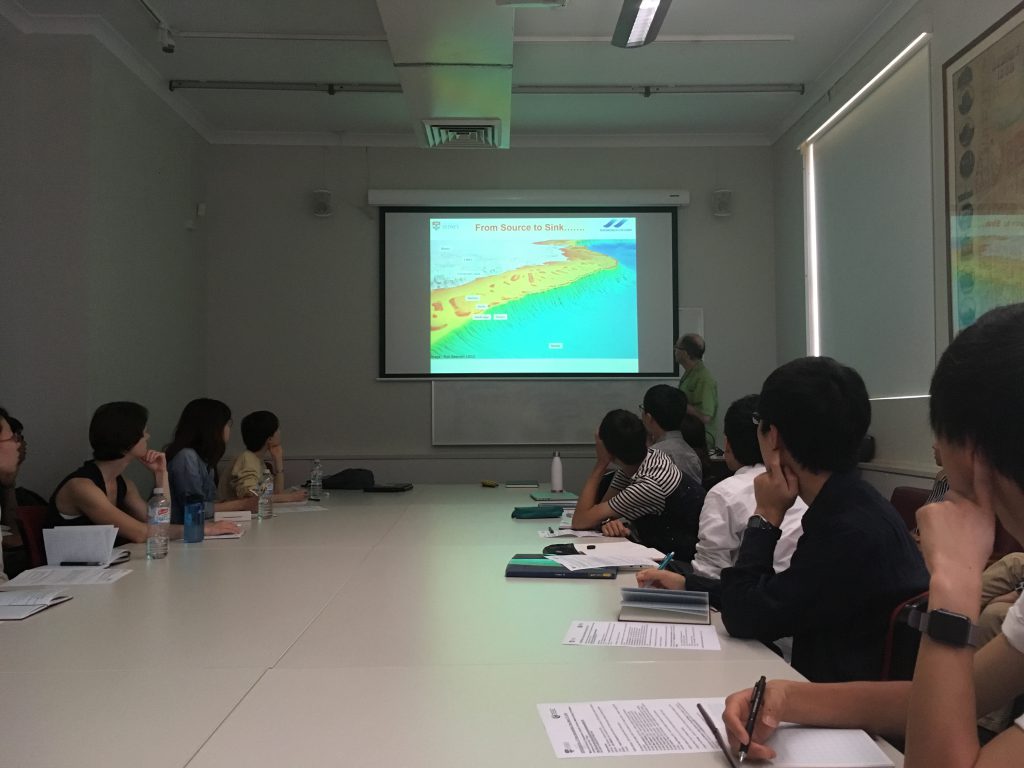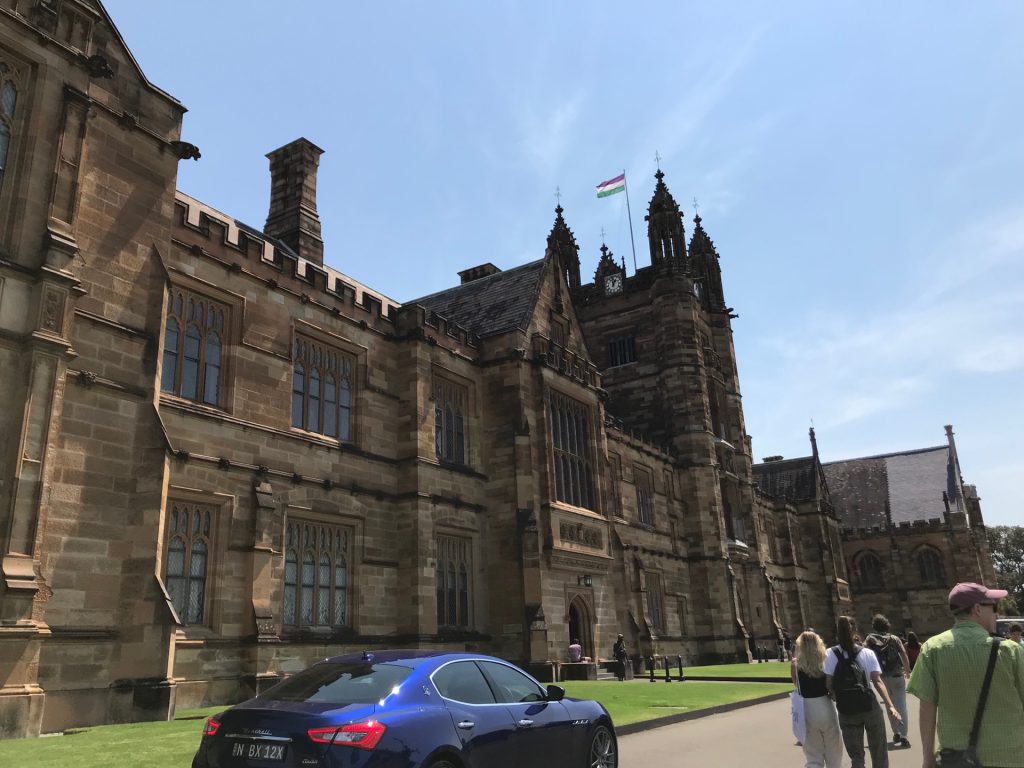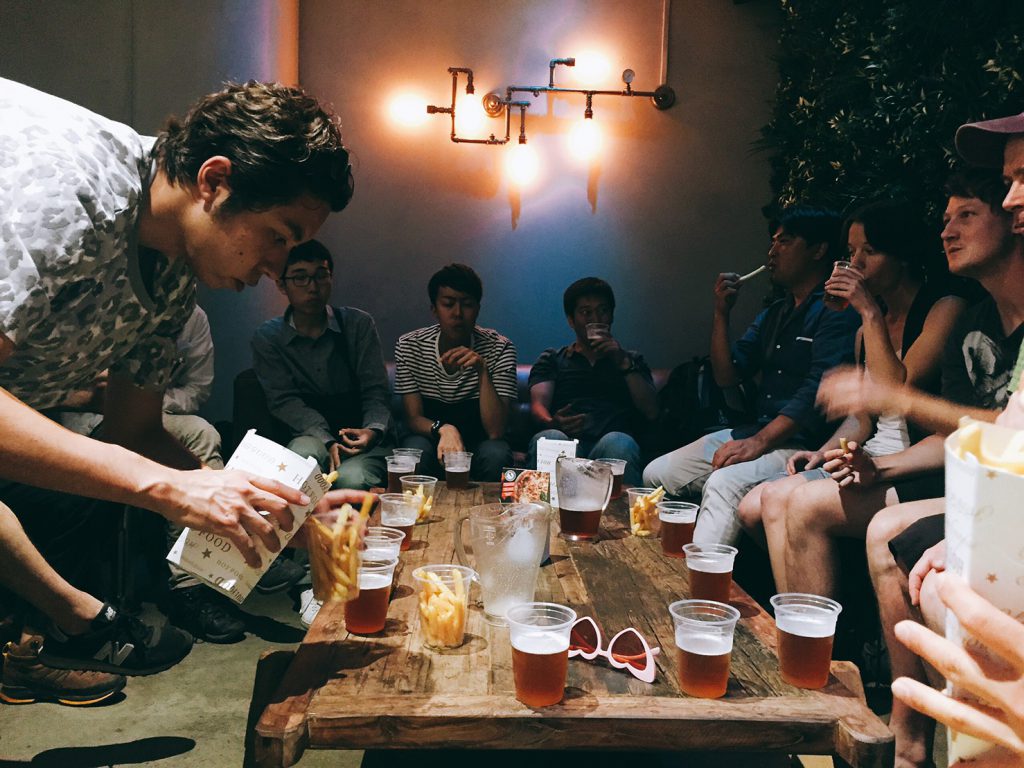General report of the AUS field trip/国際研修Iレポート Day 7 (5 Mar. 2019)
Uni. of Tokyo reef workshop: School of Geoscience, University of Sydney
We participated in the reef workshop! First, we heard the seminar from Prof. Jody Webster. His topic is the reconstruction of past Great Barrier Reef (GBR). The death and the recovery of theGBR records the past glacial/interglacial changing. Next, Yokoyama sensei, Izuka sensei, and Suzuki sensei talked about their researches.
Third, we took a seminar with Jody’s lab. students. Ana talked about Reef process, Richard spoke about non-destructive hyperspectral mapping, and so on. Total 9 students talked, and their studies mostly focus on the GBR. Growth modelling of the GBR and past environmental, ecological reconstruction using coral cores are interesting for us. We asked many questions, that is a good opportunity to communicate in English.

Georeef and Sed. Lab. tour (subtropical shelf processes)
We were given a campus tour before lunch. The most historical buildings in Australia can be seen. We enjoyed a special lunch at the cafeteria!
At the Georeef lab., the coral cores can be observed. We watched ICP-MS (Inductively Coupled Plasma-Mass Spectrometry), which can detect many kinds of stable isotope in high precision. Lastly, we described the One Tree Reef core. To identify the corals, there were many things to see exactly. For example, growth form (platy, massive, tabular, branching, encrusting), corallite shape, size, color, growth bands, and so on. Coralgal is important, too. An assemblage of coralgal is defined by a group of corals, algae, and associated biota, which occupy a similar depth and/or environmental zone. It indicates important information to reconstruct the past. We could describe Acropora, that makes branching structure. In this case, branching corals with abundant gastropods and thick coralline algae are typical of shallow water (<6 m), high-energy environments. On the other case, whilst massive domal corals, absent of gastropods are more likely associated with a deeper (>10 m), more turbid environment. It is necessary to remember that all of the materials recovered in a core may not only represent in-situ reef frameworks, but may also include re-deposited corals, potentially locating older or younger material which is out of sequence.


Sydney city
In the evening, we took a farewell break with Prof. Jody and his students. We enjoyed walking and viewing Sydney city.



